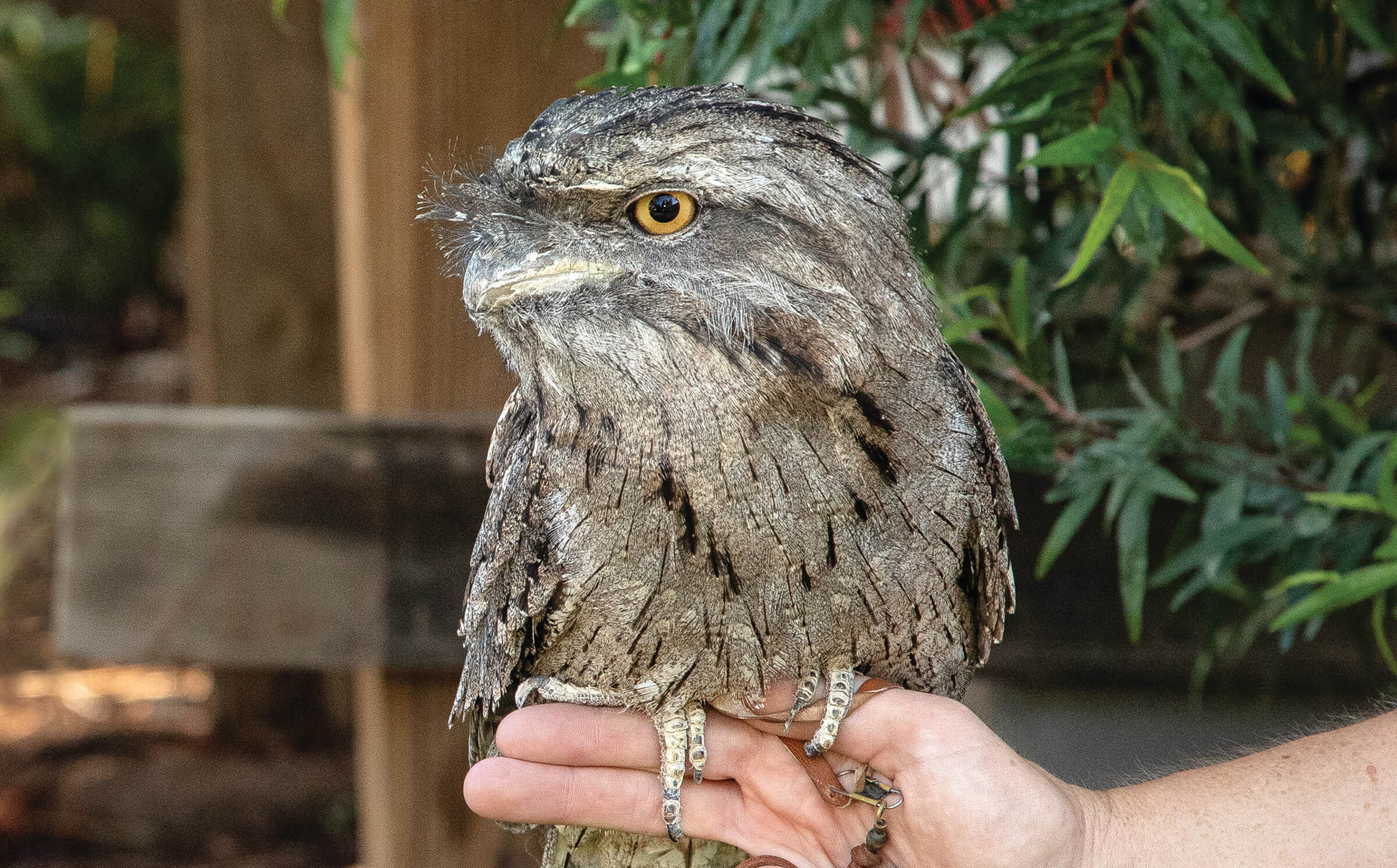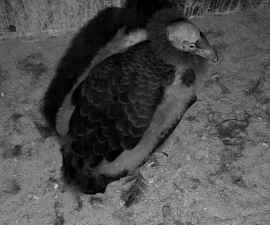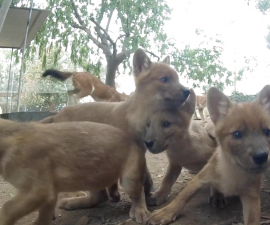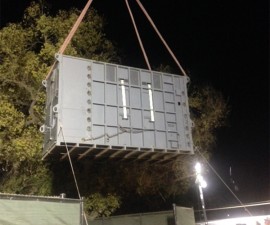You hear the infectious “laughter” before you see where it’s coming from. Steve the kookaburra is delighting a cluster of visitors at the Safari Park’s animal ambassador stage in Safari Base Camp. When he ends his long, trilling call with a loud “ha-ha-ha-ha,” human giggles erupt.
BY Donna Parham
Photography by Ken Bohn
Steve is one of several Australian ambassador animals that visit the stage with a Wildlife Workshop trainer. They are all part of an interactive program that brings Park guests face to face with affable animals. As the animal stars demonstrate natural behaviors, their trainers share insights about the animals, their habitats, and conservation. Wildlife Workshop is part of the Park’s safari experiences team (the same group that guides guests on Caravan Safaris, Cart Safaris, Behind-the-Scenes Safaris, and Ultimate Safaris).
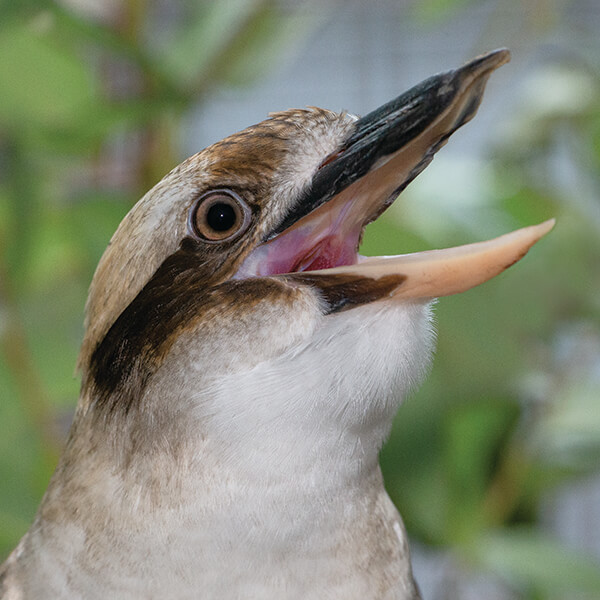
WHAT’S SO FUNNY?
Ever sociable, Steve often responds to guests who roll their Rs, sometimes launching into a raucous, full-fledged kookaburra laugh.
Perched on a peaceful hillside tucked behind the scenes, 25 team members tend to 68 extraordinary animals that are ambassadors for conservation. “Close-up, personal interactions with ambassador animals lead to greater empathy and understanding,” says Travis Hughes, director of safari experiences at the Park. “We share with people the challenges the species are facing, which inspires guests to explore actions they can take to help animals in the wild.”
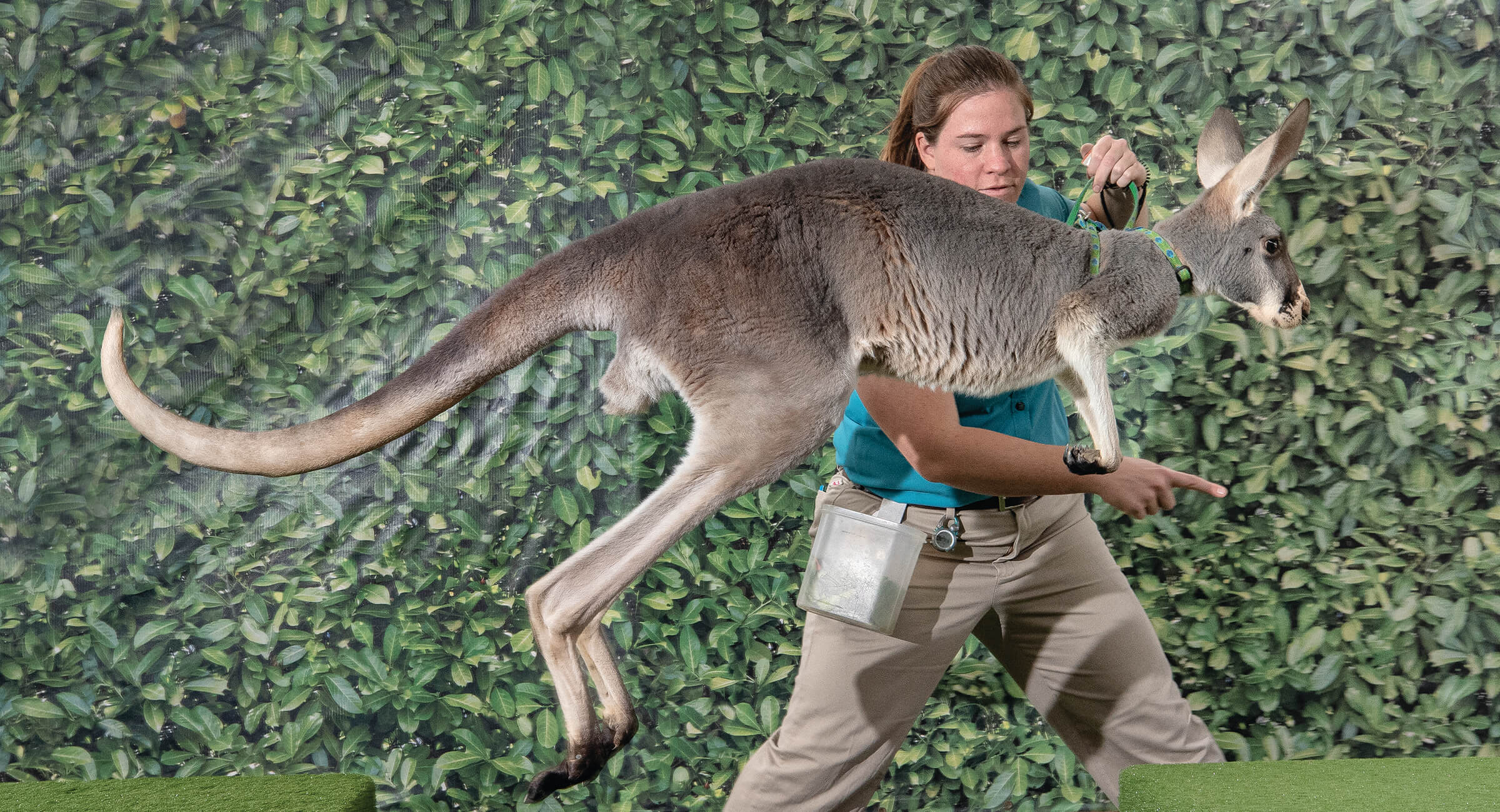
HOP-HOP-HOORAY!
Addie, a red kangaroo, wows visitors at Wildlife Workshop as she responds to trainer Kara Walsh’s request to demonstrate her powerful hop.
With the opening of Walkabout Australia in 2018 and the arrival of the platypuses last year, Park guests have been eager to learn about Australian species. Wildlife Workshop ambassador animals include 19 Australian natives that you’ll find popping up with their trainers in Safari Base Camp, Nairobi Village, and Walkabout Australia. Another way to see them is by taking a Platypus and Friends or Roos and Mates Behind-the-Scenes Safari, where you may find yourself face to face with a kangaroo, a cockatoo, a sugar glider, a blue-tongued skink, and more—every tour is different.

WALLA-BEA
(Left) Bea, a red-necked wallaby. As a nine-month-old, Bea liked to snuggle into a cloth pouch worn by her trainer. Today, she greets guests on her own four—or sometimes two—unique feet. (Right) A sugar glider springs into the air. By spreading the loose skin that extends between their limbs, these little marsupials can glide through the Australian forest for 20 feet or more.
On a Roos and Mates tour, we make the acquaintance of an inquisitive (and adorable!) red-necked wallaby named Bea. Her reluctance to sit still gives senior trainer Donna Kent the opportunity to explain the unique way macropods (kangaroos and wallabies) walk. We watch as Bea leans forward to support her full weight on her impossibly tiny front limbs, then lifts both hind feet and pulls them forward at the same time. As Bea busily explores, nose aquiver, Donna hands us some pelleted wallaby food. It’s a thrill when Bea hops over, nuzzles us to take a few pellets, and allows us to softly stroke her thick fur. While populations of this species are stable, Donna tells us that habitat fragmentation, drought, and bushfires, like those that happened this past December and January, threaten many of Australia’s marsupials and other species.
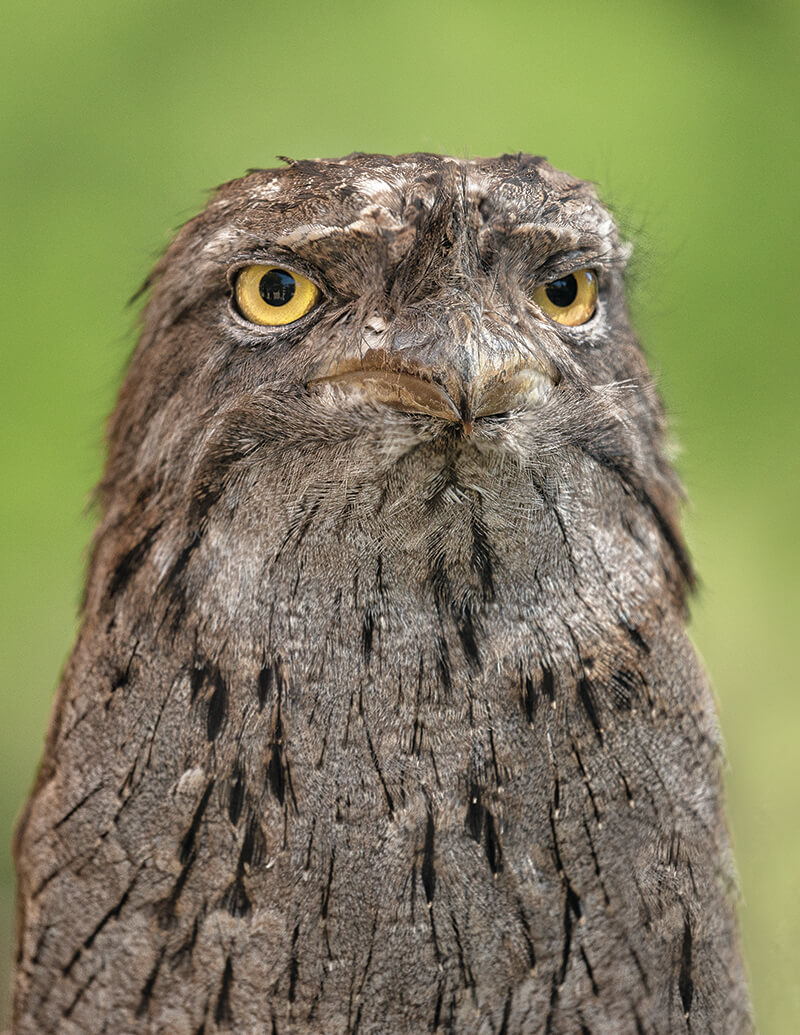
DON’T LOOK AWAY
Cliff, a tawny frogmouth. You may get a chance to meet nearly-30-year-old Cliff or his younger lookalike, Kermit, during one of the presentations at Walkabout Australia.
Next, we meet Cliff, an impressive bird that looks vaguely familiar, but proves difficult to identify. Some people on the tour suppose he’s an owl. Others suggest maybe he’s a hawk—until senior trainer Laura Spann calls our attention to the fact that Cliff has no talons for catching prey. It turns out that the owl-like bird is a tawny frogmouth—a common backyard bird in Australia that is, for the most part, an ambush predator. The inside of his mouth is bright yellow, and his tongue looks like the center of a flower. Laura points out his wide beak—responsible for the species’ common name. “He can sit in a tree, with his mouth wide open, and insects conveniently fly right in,” Laura says.
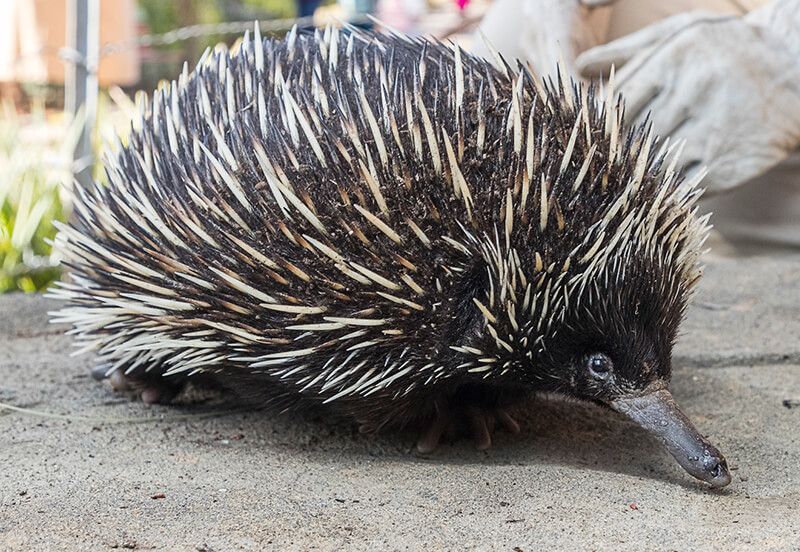
UNIQUE MAMMAL
Short-beaked echidnas are one of very few mammals—called monotremes—that lay eggs. Chindi gives Safari Park visitor a close look at this unusual species.
The spiky animal that greets the tour next is named Chindi. He is a mammal—albeit an egg-laying one. The short-beaked echidna belongs to an unusual group of mammals known as the monotremes, which also includes three species of long-beaked echidnas (all found on the island of New Guinea), and Australia’s most mysterious mammal, the platypus. “Thankfully, short-beaked echidnas like Chindi aren’t endangered,” says Chindi’s trainer, Samantha Passovoy. “But their long-beaked relatives are.” In New Guinea, echidna habitat is destroyed when it is converted for agriculture, and while people in New Guinea have traditionally hunted echidnas for subsistence, firearms and the use of hunting dogs are making hunting a bigger threat now. One danger to all four echidna species is habitat fragmentation. Highways and roads crisscrossing echidna habitat are a physical hazard, and when suitable habitat becomes separated into chunks, different populations can’t meet up to breed, and genetic viability can suffer.
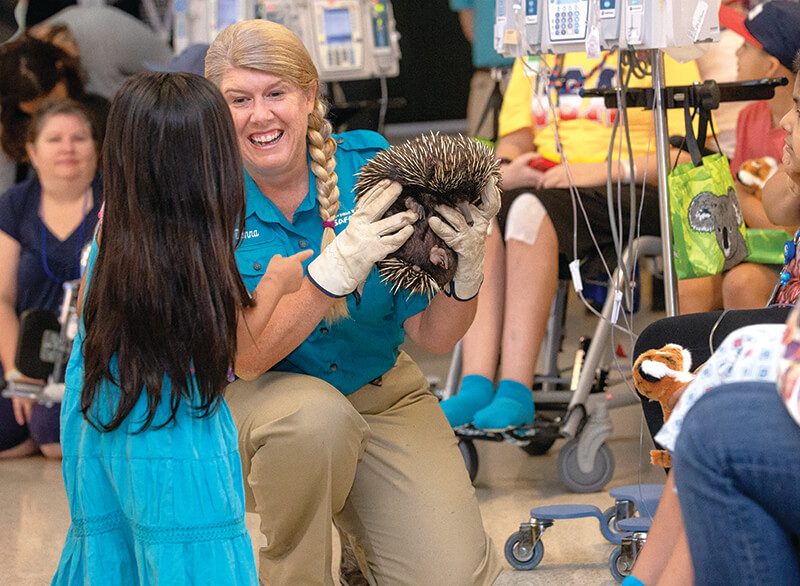
NICE TO MEET YOU
Trainer Donna Kent introduces Chindi the echidna to a new friend at Children’s Hospital of Orange County. Hospital visits like this lift the spirits of the patients and their families, and give them a chance to meet and learn about animals.
In addition to providing in-Park presentations and behind-the-scenes safaris, the Wildlife Workshop team also introduces people to ambassador animals at special events and at television studios. “Ambassador animals like Chindi go with us go to children’s hospitals, local news stations, education assemblies—anywhere we can share the conservation message,” Samantha says. And that’s the whole point of the Wildlife Workshop program, says Travis. “Our mission is to inspire people to make a difference for wildlife and wild places, through fun, exciting, and life-changing experiences.”
Of all the Wildlife Workshop programs, the one closest to staff members’ hearts is the
grant- and donor-funded Safari Express, which takes ambassador animals to senior care facilities and at-risk youth centers.
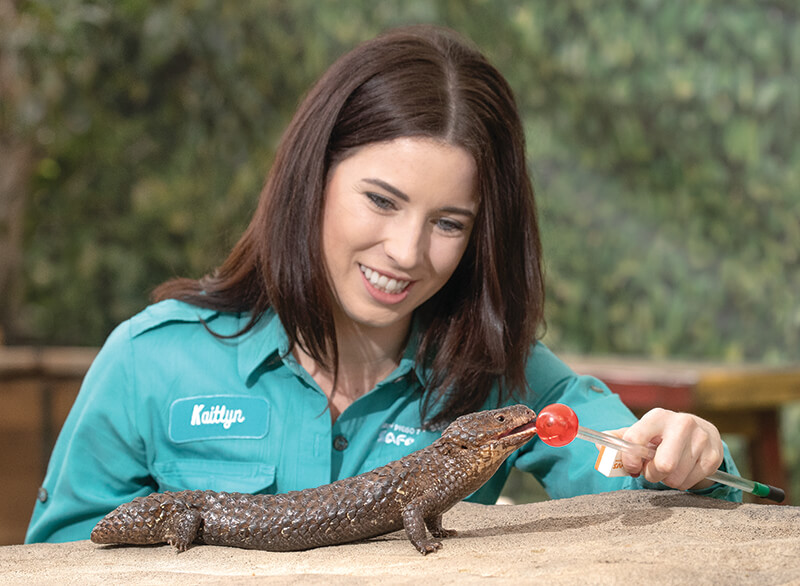
LEARNED LIZARD
Jack the shingleback skink surprises guests with his smarts; trainer Kaitlyn Downing has been teaching the Australian lizard to follow a colored target when he’s in the mood for guest interaction.
Exposure to animals like Steve, Chindi, and Cliff may especially benefit those who otherwise tend to isolate themselves. Care workers at senior facilities note that even residents who normally decline group activities come out of their rooms to see a Wildlife Workshop presentation and meet the animals. During one visit, a memory care, hospice patient attended the presentation. To the pleasant surprise of her family, the otherwise non-communicative woman spoke enthusiastically about the animals for a week. After she passed away, the family wrote a thank-you letter to the Wildlife Workshop team, to let them know how much joy it gave them to see their relative so happy and animated.
San Diego Zoo Global is grateful for the individuals, corporations, and foundations that enable us to provide the Safari Express program to those in the community who may not be able to visit the Zoo or Park on their own.

